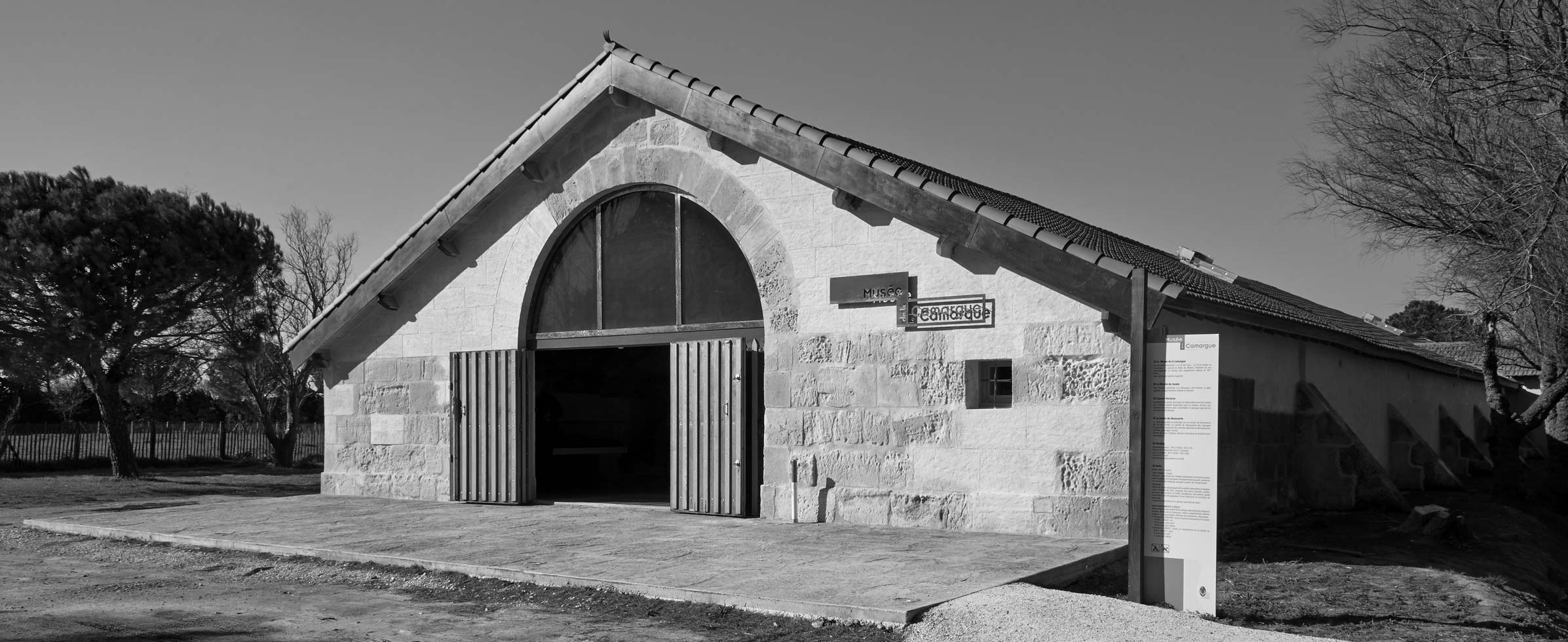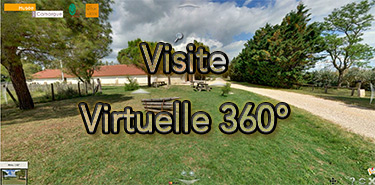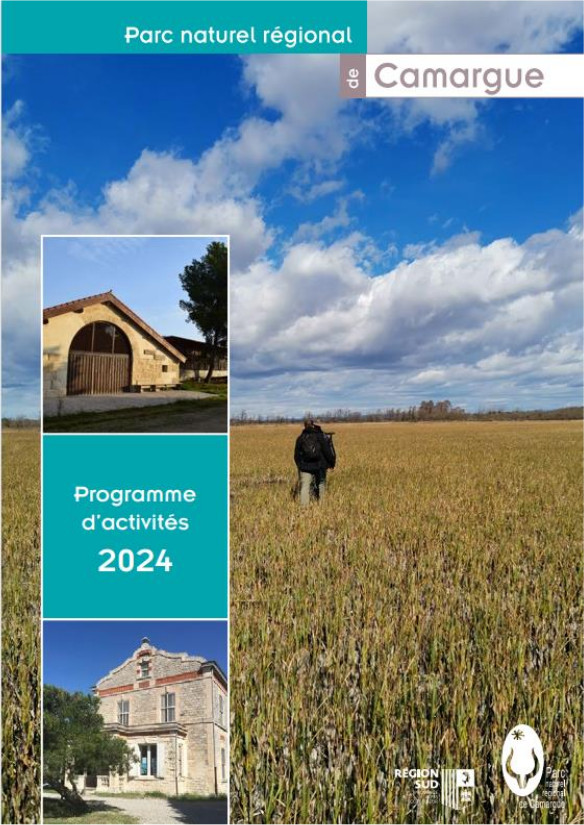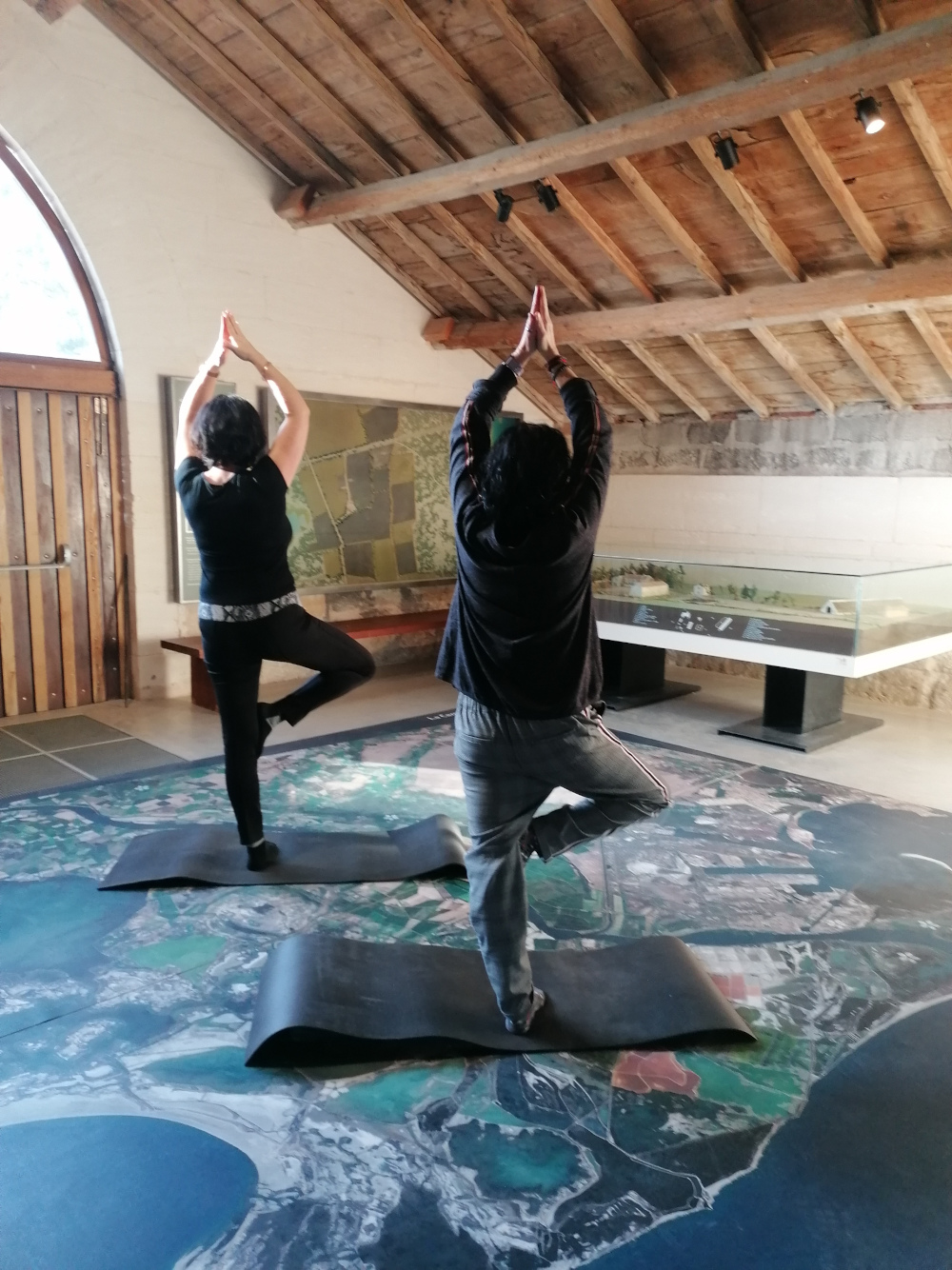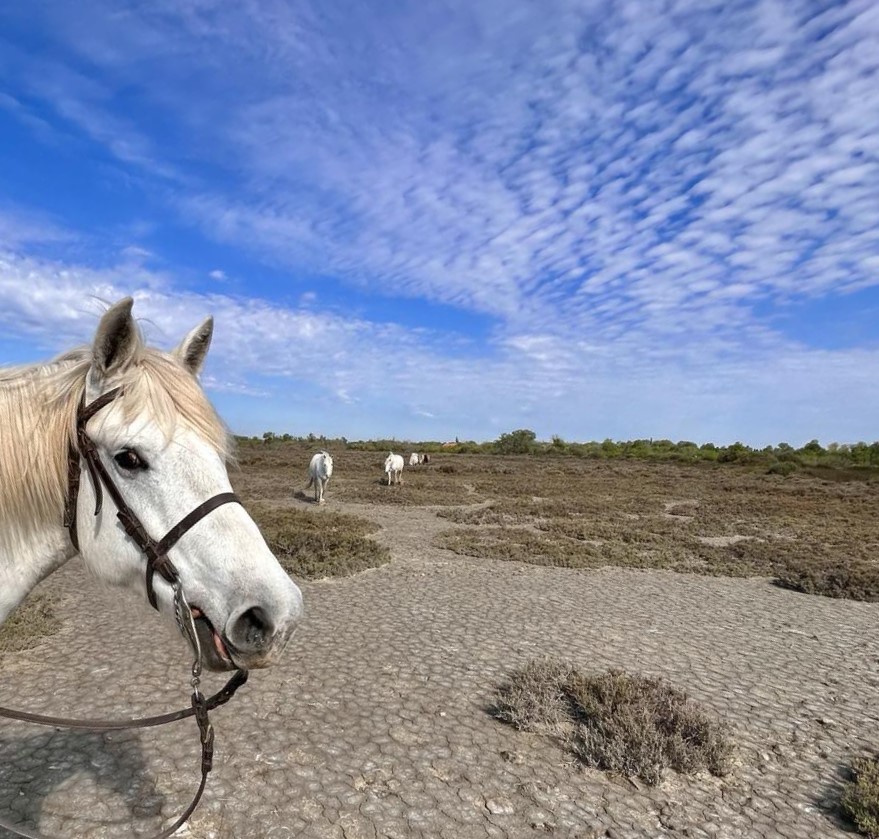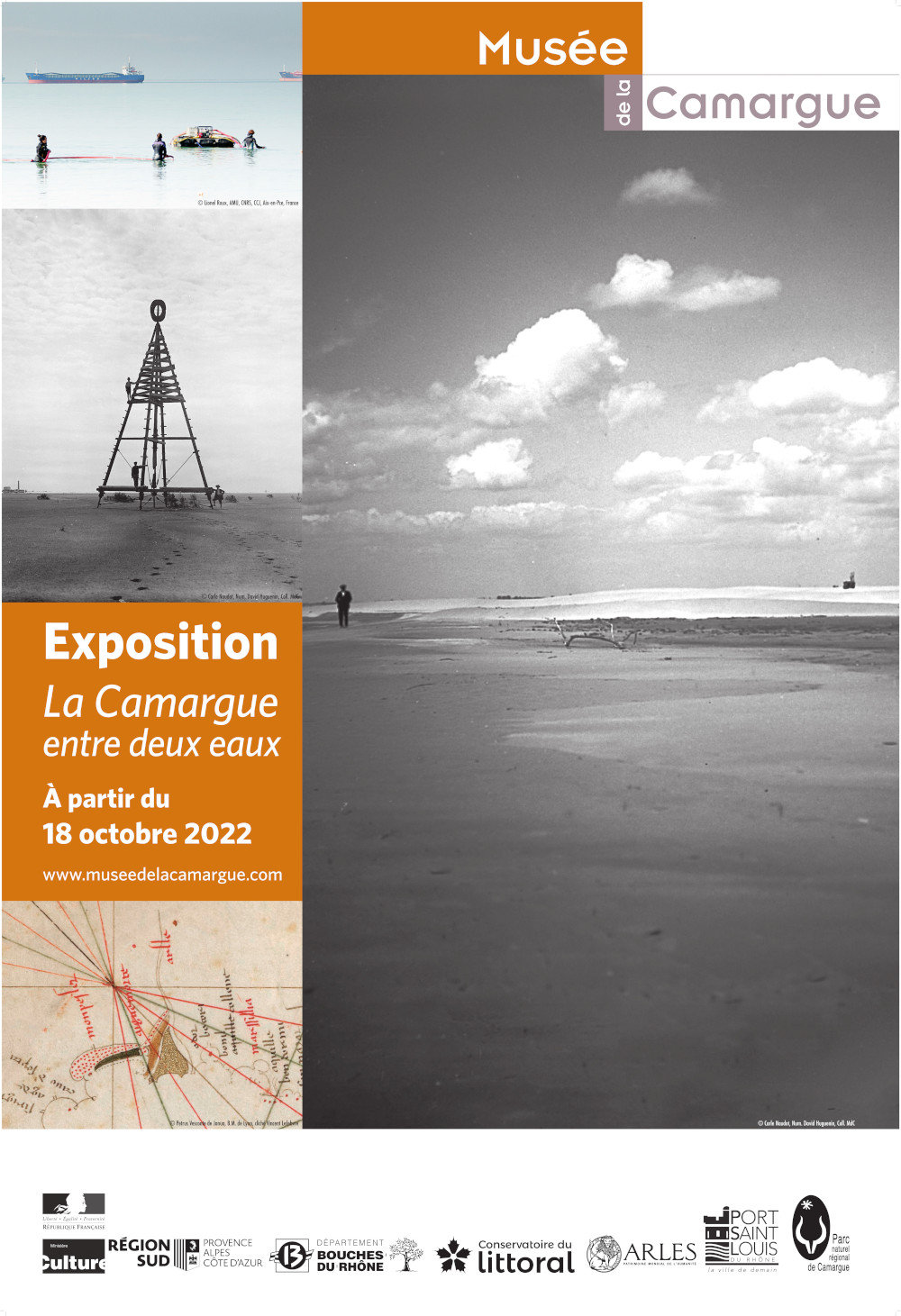The Camargue Museum is a cultural place in a rural area, belonging to the Camargue regional nature Park. It’s a folk museum settled in a former sheepfold, which has been recently renovated in keeping with sustainable development. It proposes to go back in time and make the link between yesterday and today in Camargue through the permanent exhibition "The flow of the water, the flow of the time in Camargue".
It is a lively place where exhibitions meet rich and varied cultural actions.
Permanent exhibition : The flow of water, the flow of time
The Camargue is one of humanity’s finest achievements in Provence the result of a never-ending struggle against flooding and salinity in the area between the major branches of the river Rhône and the Mediterranean coast. This is a wetland of rich and varied resources. But it is also challenging and unstabl, and requires considerable efforts of adaptation.
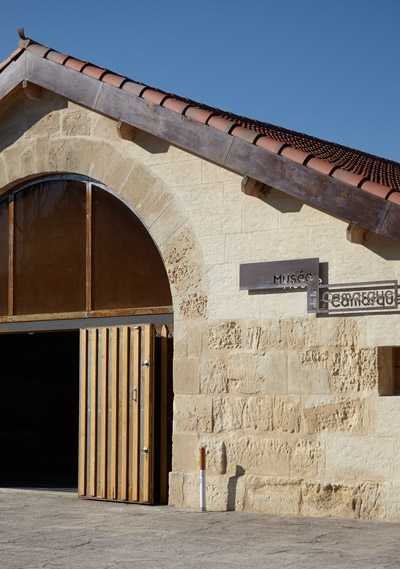 The Camargue Regional Nature Park, created in 1970, brings together local communities, the Department, the Region and the State, along with partners such as the Compagnie Nationale du Rhône, to maintain the region's exceptional qualities. The implementation of the Natura 2000 program, for example, has seen the adoption of measures that can in some cases be restrictive, for local people and visitors alike. The present work, based on the Museum of the Camargue's permanent exhibition, outlines an integrated management plan that attempts to strike a balance between development objectives and the protection of nature.
The Camargue Regional Nature Park, created in 1970, brings together local communities, the Department, the Region and the State, along with partners such as the Compagnie Nationale du Rhône, to maintain the region's exceptional qualities. The implementation of the Natura 2000 program, for example, has seen the adoption of measures that can in some cases be restrictive, for local people and visitors alike. The present work, based on the Museum of the Camargue's permanent exhibition, outlines an integrated management plan that attempts to strike a balance between development objectives and the protection of nature.
The Rhône is central to this balance. In both space and time, it determines the conditions of life in the Camargue. Water is required in large quantities for irrigation purposes; but it can also cause flooding, and is an object of constant vigilance.
Public and private bodies own similar amounts of land in the region, and over the 20th century cooperation grew up between them on a number of issues. Climate change, for example, has to be tackled collectively, by those who are in charge of the Rhône and those who use its water; those who live along its banks and those who live by the sea; those in the tourist business; those who manage the protected sites that are open to the public; and those who make the rules.
Succeeding generations must look to the future of the delta, taking into account its ongoing dynamic. The Camargue of yesteryear is not that of today; and that of the future will be different again. What remains is people, and nature.
The flow of time, a museum about society
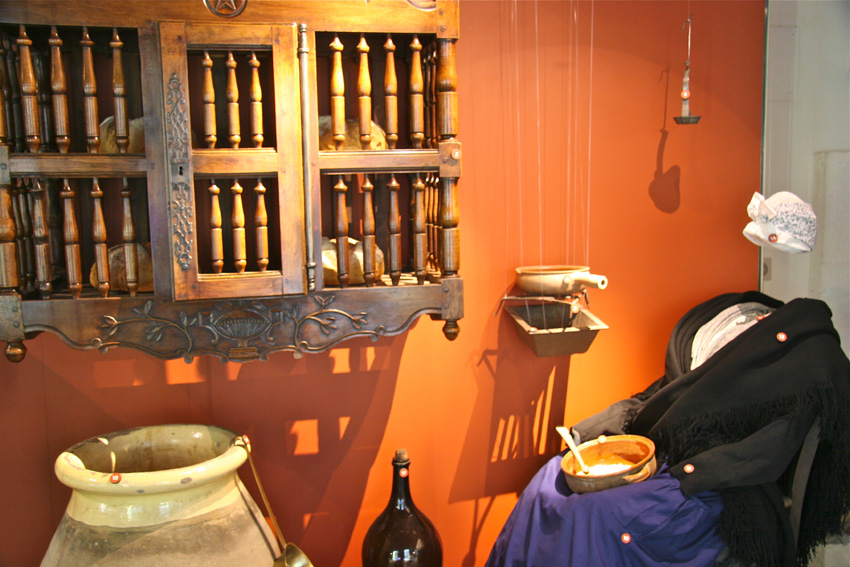 This is the history, starting in the 19th century, of a territory that has been constructed and fashioned by those who live and work there. But the exceptional character of its natural environment has also been recognised and given protection.
This is the history, starting in the 19th century, of a territory that has been constructed and fashioned by those who live and work there. But the exceptional character of its natural environment has also been recognised and given protection.
The Camargue was visited successively by groups of people who either settled there or simply passed through. They came as a result of maritime trade, war, the rise in agricultural production or industrialisati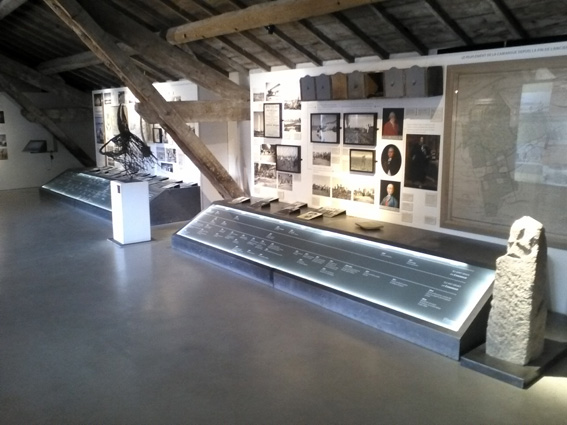 on. The process began at the dawn of history, and continues to the present day. For most of those who live in the Camargue, it was their grandparents, parents, or indeed themselves who came there to work, and ended up staying.
on. The process began at the dawn of history, and continues to the present day. For most of those who live in the Camargue, it was their grandparents, parents, or indeed themselves who came there to work, and ended up staying.
The Camargue has benefitted from the circulation of thousands of images. And collections of photographs taken between 1900 and 1970 have been donated to the Museum of the Camargue by the families of Carle Naudot (1880-1948), Gaston Bouzanquet (1866-1937) and Etienne Laget (1896-1990). These photographs, which have figured in books and exhibitions, record the ways in which the landscapes and culture of the Camargue changed over a significant period of its history.
The flow of water, a permanent struggle between fresh and salt water
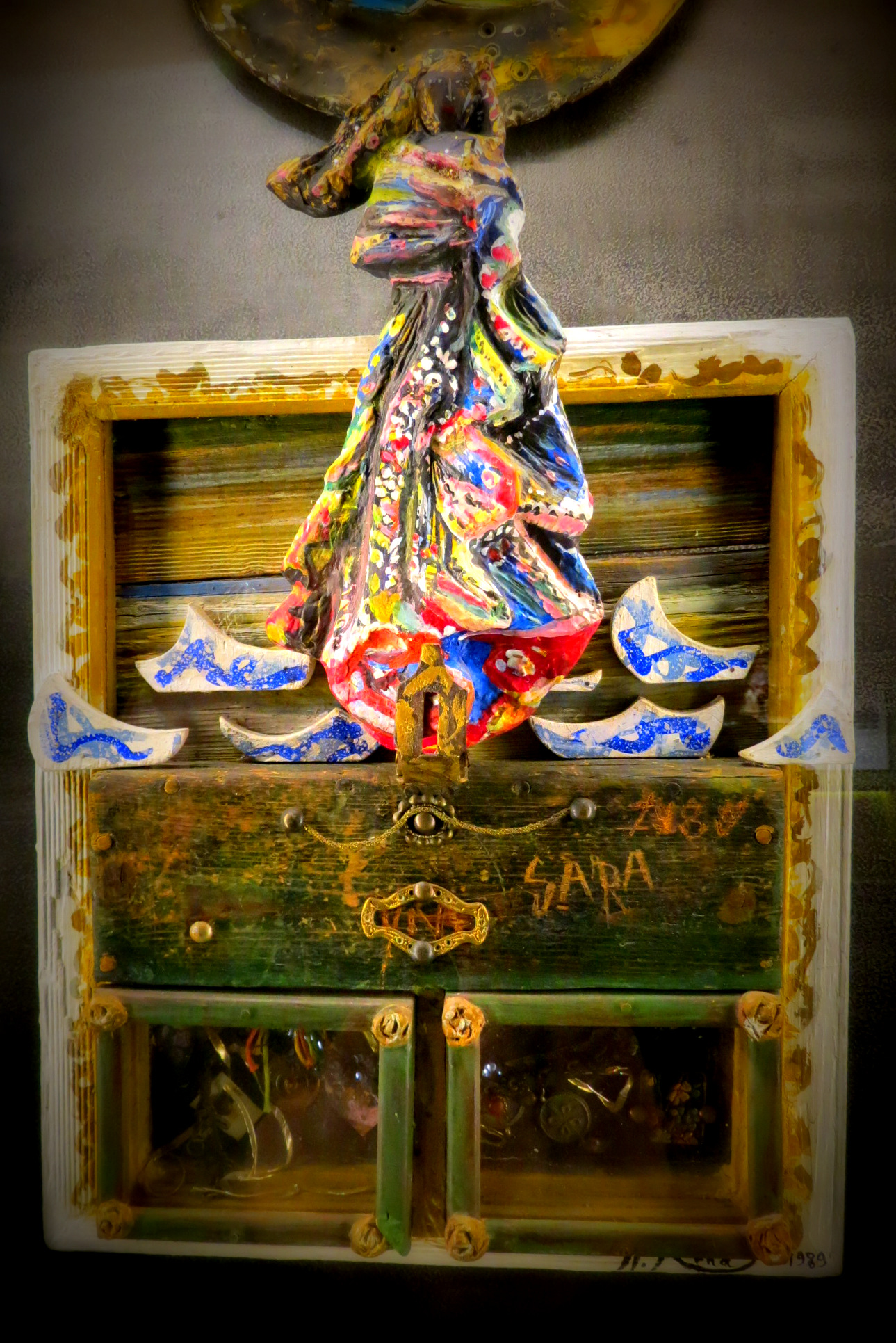
The museum of Camargue, a museum dedicated to a region and its inhabitants
The museum was created in 1977 by the Camargue Regional Nature Park, which provides its management structure. It occupies the former Mas de Rousty sheep farm, in the administrative district of Arles.
The Museum of the Camargue is a "Musée de France", an appellation awarded to museums that house public collections operating under the authority of the ministry of culture and the national museums council.
The Museum of the Camargue, at the heart of a nature park
In 1966, at a meeting called by DATAR in Lurs-en-Provence, a group of experts discussed ways of protecting natural environments, in cooperation with local people. What emerged was the idea that museums could constitute a resource for future Regional Nature Parks.
In 1968-9, museums were created in the Armorique and Landes de Gascogne Regional Nature Parks under the direction of Georges-Henri Rivière, the founder of the Musée National des Arts et Traditions Populaires. His innovative concept of the "ecomuseum" spread across France, particularly in the National and Regional Nature Parks, with their growing numbers of visitors.
Created in 1970, the Camargue Regional Nature Park was soon faced with the question of relations between its 8,500 inhabitants and the million or more people who came there each year. Would the visitors be aware that the Camargue was not just a playground for flamingos, bulls and wild horses, but an intricate, fragile system in which the indigenous population also played a role?
In 1973, it was decided to create a museum in the former sheep farm at the Mas du Pont de Rousty, which had been acquired by the Camargue Regional Nature Park. Georges-Henri Rivière was consulted about the human and natural history of the Camargue, and he supervised the different stages in the creation of the museum, which was initially called the Museon Camarguen on account of its filiation with the Museon Arlaten and its founder Frédéric Mistral.
The people of the Camargue participated in the project, and 1977 saw the start of a campaign to explain the programme and launch an appeal for assistance in compiling the collection. The result was the donation of 200 objects, i.e. two thirds of the total number. The others were purchased.
After a preview for the local people in 1978, the museum officially opened in 1979, when it was voted European Museum of the Year.
The Museum of the Camargue today
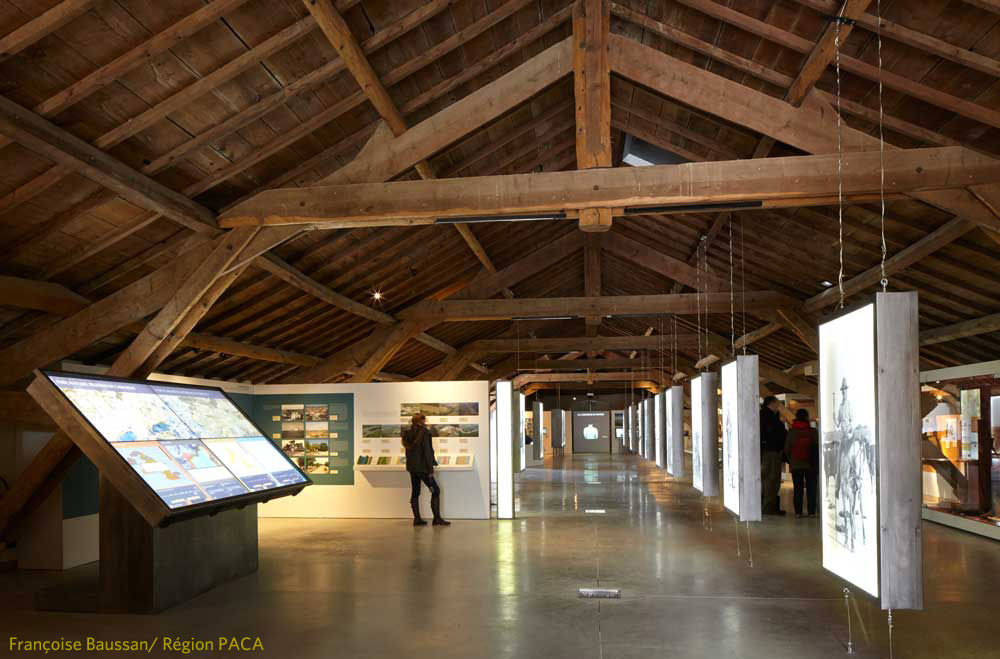 Entirely renovated in 2013, the museum, as a link between people and nature, is more vital than ever to the achievement of the objectives set out in the park's 2012 charter, namely:
Entirely renovated in 2013, the museum, as a link between people and nature, is more vital than ever to the achievement of the objectives set out in the park's 2012 charter, namely:
• to highlight the diversity of the region, and to promote social cohesion through history, culture and contemporary creativity, experimentation and innovative artistic activities, in partnership with museums, associations, artists, researchers and educationalists;
• to encourage comparative approaches, working with other bodies in the Mediterranean basin and its deltas, as a laboratory for multidisciplinary research in the human, life and earth sciences;
• to cooperate with all sectors of society for the protection and conservation of the local cultural and material heritage, with active sensitisation programmes aimed at different target groups, but also promotional and educational initiatives that are intended to make culture available to all.
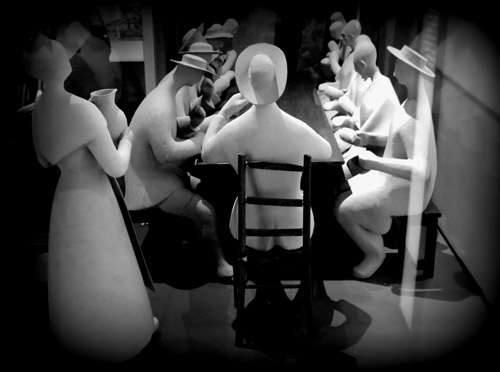 In the pursuit of these aims, the park set up an action team. Between 2009 and 2013, in preparation for the European year of culture, there were workshops led by the artist Tadashi Kawamata to organise a discovery trail focussed on the theme of water. Three wooden landscape "observatories" were constructed. At the museum itself is one of these, Horizons, which is situated in a flood-prone zone (as defined by the regional Prefect in 2012). It evokes Noah's ark, and looks out over an agricultural estate, giving the visitor a number of different views, both interior and exterior. It can be seen from the discovery trail and the main road, as a landmark and an invitation.
In the pursuit of these aims, the park set up an action team. Between 2009 and 2013, in preparation for the European year of culture, there were workshops led by the artist Tadashi Kawamata to organise a discovery trail focussed on the theme of water. Three wooden landscape "observatories" were constructed. At the museum itself is one of these, Horizons, which is situated in a flood-prone zone (as defined by the regional Prefect in 2012). It evokes Noah's ark, and looks out over an agricultural estate, giving the visitor a number of different views, both interior and exterior. It can be seen from the discovery trail and the main road, as a landmark and an invitation.
The Camargue was spared the disfigurement suffered by other parts of the Mediterranean in the 1960s. But vigilance is the order of the day, and the Camargue Regional Nature Park is concerned with promoting a form of tourism which, while opening up the region to the discovery of nature and culture, is also respectful of the environment
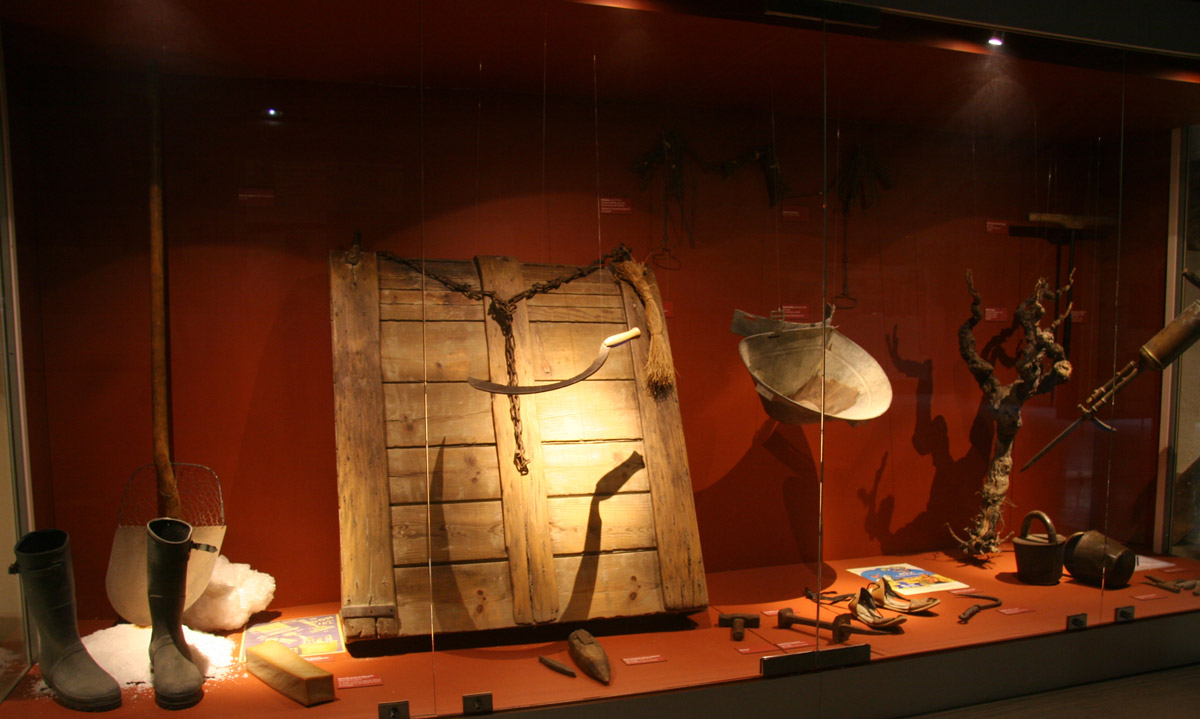
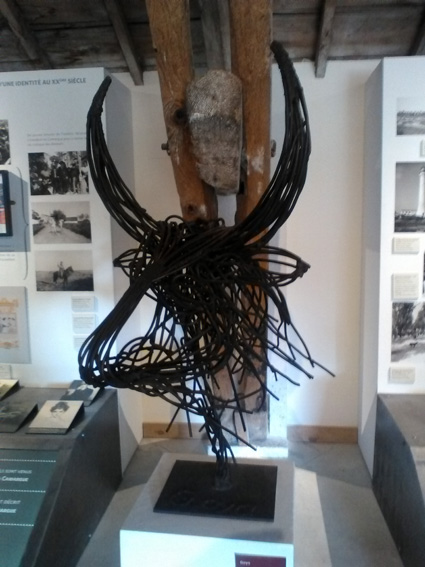
The nature trail of the Mas du Pont de Rousty
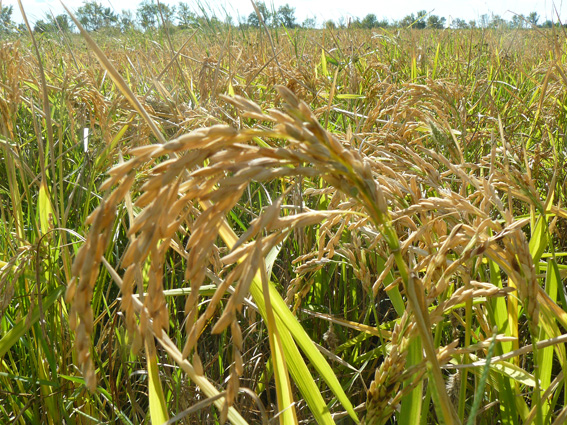
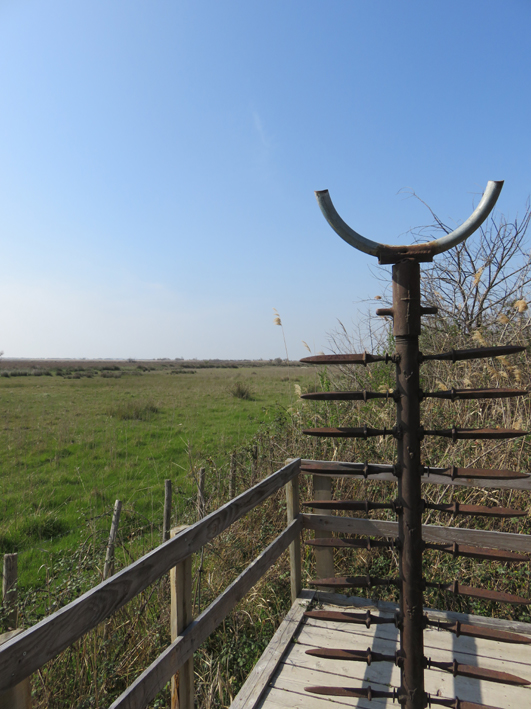
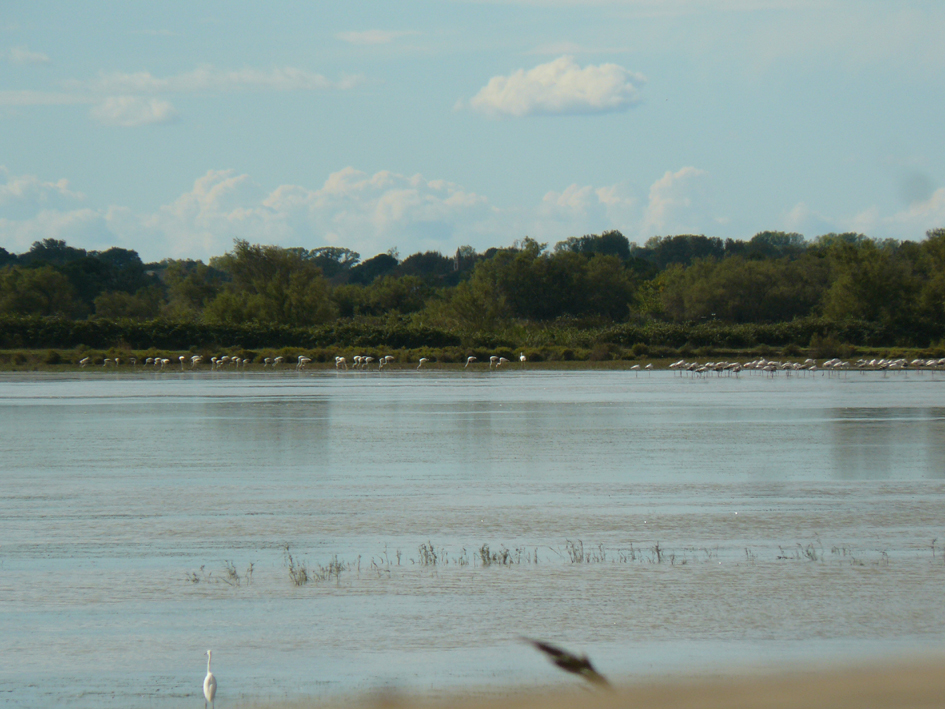
4 km long, leads to different parts of the delta and the water management facilities that have been installed there. It runs along the Rousty canal that was dug in 1543 to drain farms and marshes. The "draille" taken by the shepherds and their herds during transhumance in the 19th century passes a pumping station that supplies water to the rice fields. And then there are the meadows where the bulls graze, the reed beds, and a marsh where birds can be observed from an "agachon", or hide.
The boutique
Here you can find books and objects relating to the history, geography, natural environment, cultural heritage and traditional crafts of the Camargue.
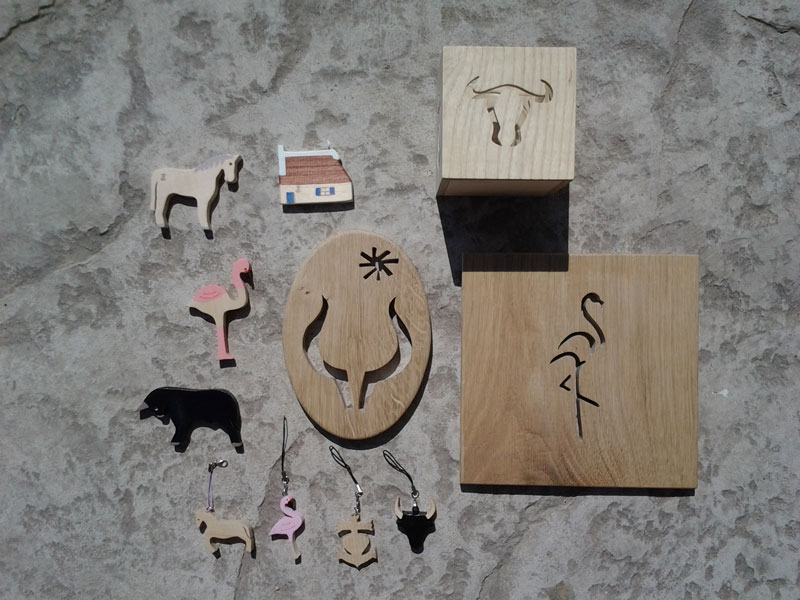
The reasons why you should come to the Camargue Museum:
> It is an introduction to the territory, which allows a better understanding of spaces, in a covered and air-conditioned place.
> It is the 1st visitor reception of the Camargue regional nature Park.
> It represents the gateway of the Camargue, in the north of the delta.
What is to see in the Museum?
> The delta : An interactive screen of the Delta: from its geological formation to today, its actors and its values.
> The Camargue of yesterday: costumes, objects, photos and explanations, to recount the life in farms and huts since the end of the 19th century.
> The Camargue of today: objects, movies, sound and musical works, photos illustrating traditional events, ecotourism…
> The Camargue in images: the Museum has a rich photographic collection in amateur photographers from 1850 to 1950, 3D photos which allow to imagine themselves in the old days of Camargue, broadcasted reports and movies…
What kind of public?
The Museum is opened to all Camargue lovers:
- Individuals who wonder about the territory and want to understand him better
- Children accompanied by an adult
- Groups for a free or guided visit (Museum or trail)
Prices list:
> Full price: 7€
> Reduced price: 4€ (between 10 and 18 years old, students, over 65 years old, disabled person, group over 10 persons…)
> Free: under 10 years old - under 18 years old (school visit, job seeker, journalist, teacher, ICOM members…) - every 1st Sunday of the month
> Arles monuments Passes:
- Advantages Pass (16€/13€): all monuments and museums access (valid for 6 month)
- Liberty Pass (12€/10€): 4 monuments and 1 museum access (valid for 1 month)
> FAMILLY PASSES
24€ : 2adults + 3 children between 10 and 18 years + children less 10 years (free)
20€ : 2 adults + 2 children between 10 and 18 years
13€ : 1 adult + 2 children between 10 and 18 years
9€ : 1 adult + 1 child between 10 and 18 years
Services:
- Free access, all year
- Picnic area
- Ecological toilets (dry toilets)
- Free car park (allowed for buses)
- Shop: handcrafted products, driftwoods…
Entrance:
Mas du Pont de Rousty - 13200 Arles
GPS coordinates: Lat. 43.6238067 - Long. 4.5287493
Road RD570 towards Saintes-Maries-de-la-Mer - between Arles and Albaron
10km from Arles - 27km from Saintes-Maries-de-la-Mer - 15km from Saint-Gilles
Before coming:
> Surf on the Camargue Museum and regional nature Park websites to learn more about us: www.museedelacamargue.com / www.parc-camargue.fr
> Join the Museum on Facebook for current events and news
A lively Museum:
The Camargue Museum is a friendly place, which invites regularly speakers, musicians, artists or professionals to exchange about a theme.
The Museum tomorrow:
The Museum expansion, a stilt house construction, is expected in March 2019 on the occasion of its fortieth anniversary. It will offer a temporary showroom, a more spacious reception and a more attractive shop with a larger range of local and handcrafted objects.
Labels:
> “Tourisme & Handicaps”: the museum is able to receive all types of disability (hearing, mental, motor and visual)
> “Valeurs Parc naturel regional” brand
